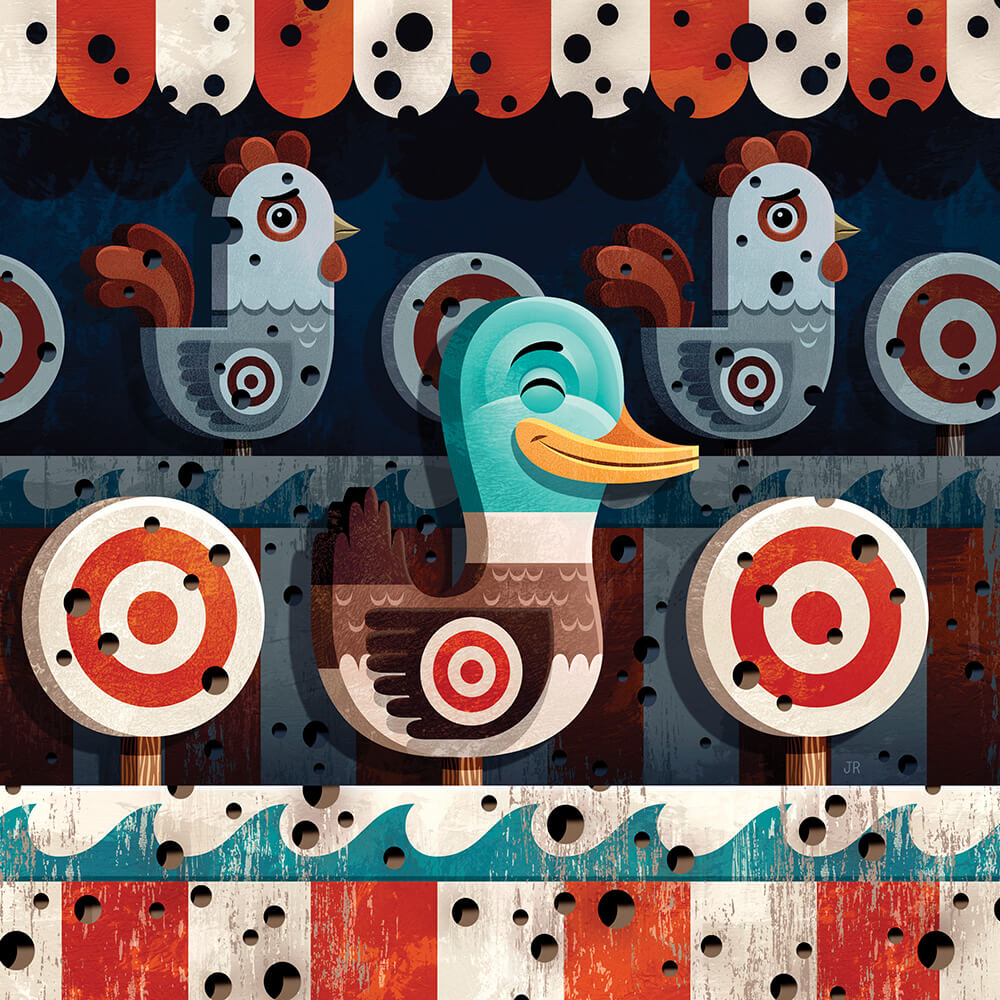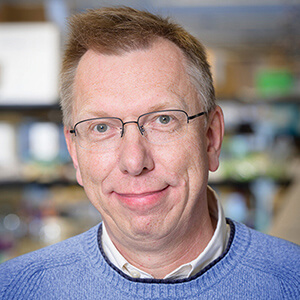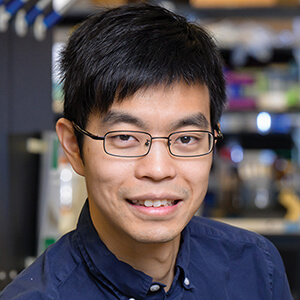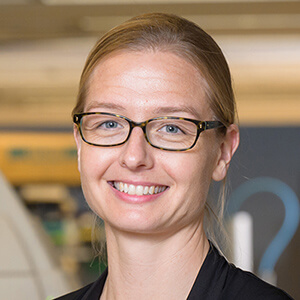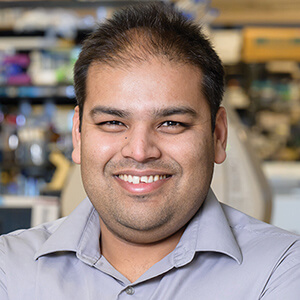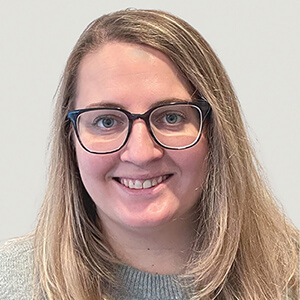Flu Fighter
For about a decade now, Nicholas Wu has thought about ducks.
He’d long known about avian influenza and other infectious diseases. Wu was in elementary school in Hong Kong in 1997, when the influenza A virus subtype H5N1 spilled over to humans; six people died before the slaughter of 1.5 million chickens contained the virus. During his high school days, the 2003 SARS epidemic led to months-long lockdowns and killed nearly 300 people.
Those experiences compelled him to study immunology and virology. While completing his Ph.D. at UCLA, Wu learned that ducks carry flu viruses, but rarely get sick. They’re natural reservoirs, hosts that remain healthy even as harmful pathogens shelter inside.
How, Wu wondered, was this possible? Was there something special about ducks’ immune systems that protected them from illness? And if so—could scientists learn from this, much as studying birds’ flight informed airplane design? “Maybe we can get inspiration from these animals and make much better antibodies or drugs,” he says.
These questions burned in the back of his mind as Wu finished his studies and post-doctoral work, then joined the U of I biochemistry department in 2020. Even as his newly established lab tackled other important topics, such as SARS-CoV-2, he hoped to someday unlock the secrets of aquatic birds.
Now—thanks to a $9.5 million grant recently awarded to four Illinois faculty members, including Wu and a collaborator in Colorado—he finally has the chance to dive in.
The ambitious new project is one of 13 funded by the Howard Hughes Medical Institute’s Emerging Pathogens Initiative, launched in the wake of the COVID-19 pandemic to prepare for future health threats. The focus comes none too soon: The largest outbreak of avian influenza in U.S. history began in early 2022 and continues, so far affecting more than 58 million farmed birds. And just this March, Chile reported a case of H5N1 in a human exposed to infected poultry.
Over the course of three years, a team of five collaborators—led by Wilfred van der Donk, the Richard E. Heckert Endowed Chair in Chemistry at Illinois—will aim to better understand ducks’ immune systems, and then apply those findings to protect humans from illness. The team includes Wu and Beth Stadtmueller, biochemistry professors in the School of Molecular & Cellular Biology; chemistry professors van der Donk and Angad Mehta; and Jenna Guthmiller, assistant professor of immunology and microbiology at the University of Colorado Anschutz Medical Campus.
Their efforts could enable the engineering of new prevention and treatment methods not just for flu, but for other types of harmful pathogens—and beyond.
“What we are developing will be modular, so it will be [applicable] for various emerging pathogens, including viruses or bacteria,” says Mehta, who’s also a T.M. Balthazor Faculty Scholar. “And not just that. I believe these platforms will have implications for [many] generating biologics, including diseases like cancer. It’s a whole new horizon.”
Although he’s based at Illinois, van der Donk has, since 2008, been an investigator at the Howard Hughes Medical Institute (HHMI), a Maryland-based biomedical research and philanthropic organization. This prestigious role rewards scientists who push boundaries in their work; investigators maintain their appointments at research institutions while receiving HHMI funding and support. In late 2021, he attended a series of virtual town hall meetings describing a new HHMI program called the Emerging Pathogens Initiative (EPI). The effort was inspired by the incredible turmoil COVID-19 caused and the fast, ground-breaking scientific response to understanding and fighting the disease; HHMI hoped to build on this momentum, funding projects to avert the next crises.
“Mapping multiple pathways to prevent or treat infection is important; vaccines can’t be the only solution for future outbreaks.”
Van der Donk knew he wanted to submit a proposal and began seeking out the best ideas at Illinois. He reached out to several potential collaborators, including Wu, Stadtmueller and Mehta.
That they were all assistant professors was intentional (though scientists could also apply for EPI grants for a single lab or a large consortium). The track that they applied through was reserved for teams with one senior investigator and up to four junior faculty. The idea is to give early-career scientists a jump-start collaborating across disciplines, van der Donk says.
Although Wu had fewer than 24 hours to prepare a pitch, he knew just what he’d propose: the ducks. In a meeting with van der Donk, he emphasized that when many of the current bird flu strains spill over, they kill more than half of the humans who catch them. If they could decode ducks’ defenses and repurpose them to thwart the disease, their work could be transformative.
His ideas were persuasive. “The lethality rate made an impression,” van der Donk says. “After having seen how COVID disrupted all of our lives—if bird flu spills over and becomes infectious for humans, we might be talking about a completely different level of a pandemic.”
The experiment Wu proposed was daunting. Unlike humans or mice, ducks aren’t particularly well-studied. Even before they could understand duck antibodies, let alone make them into useful therapies, they’d have to first develop tools to find and isolate B cells, the type of white blood cell that produces them. “There are so many technical obstacles to overcome before you can actually start working on what you want to work on,” Wu says.
But van der Donk knew HHMI was looking for out-of-the-box ideas. The potential to apply these techniques to other diseases, and other animals that could serve as reservoirs for them—such as bats and mink—was enormous. And in his conversations with Stadtmueller and Mehta, he’d already started to see how pieces of the puzzle could come together.
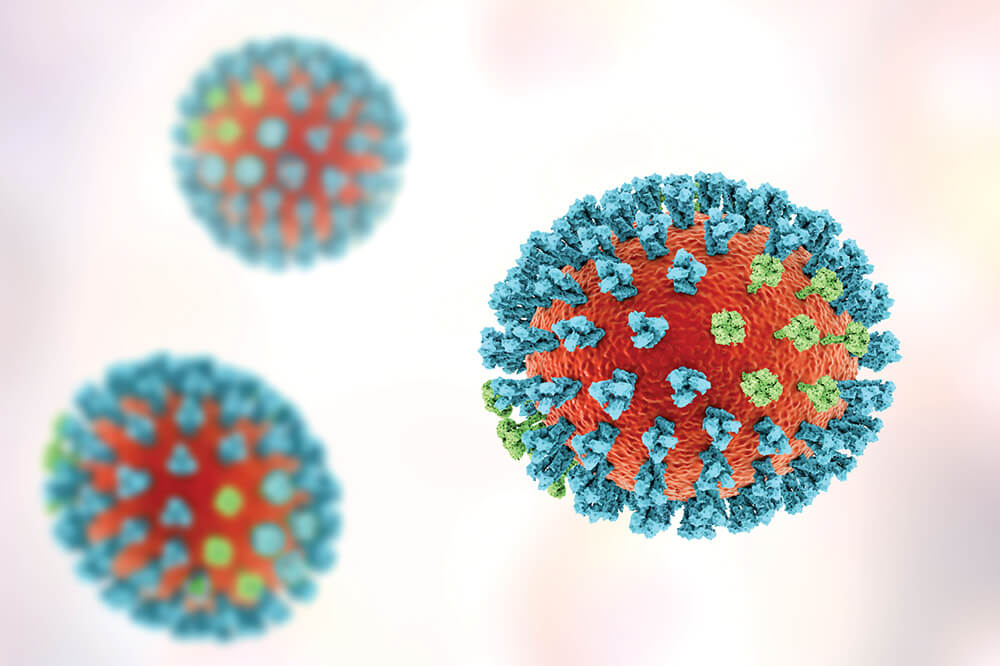
The latest H5N1 outbreak has directly or indirectly killed more than 50 million chickens, turkeys and other poultry on U.S. farms. (Image Katerynakon/Science Photo Library/Getty Images)
One way in which disease-causing antigens such as viruses wreak havoc on their hosts is by binding, protein to protein, with human cells. Take SARS-CoV-2 and its infamous “spike” protein, which gains entry to our cells by binding with a human protein called the ACE2 receptor. Similarly, influenza has a hallmark nefarious protein—hemagglutinin—that clings to cell surfaces (that’s the H in H1N1 or H5N1; the numbers are different subtypes).
Antibodies, also known as immunoglobulins, are protective proteins produced by the immune system to bind to antigens instead, preventing them from attaching to or interacting with cells. Most antibodies are found in blood, but some also reside in the body’s mucus membranes. Stadtmueller’s lab specializes in studying these mucosal antibodies, defining both their structure and function.
It’s an expertise particularly important to studying avian influenza. Flu is thought of as a respiratory infection in humans and other mammals, but primarily hits birds such as chickens in the gut. Expanding the exploration of ducks’ immune responses to include mucosal antibodies increases the team’s chances of finding the key to their potent flu-fighting powers.
Meanwhile, Stadtmueller was also thinking about birds. Her lab focuses on determining the three-dimensional structures of mucosal antibodies in order to understand how they have evolved unique shapes and functions among different species. While most antibodies are Y-shaped, mucosal antibodies have multiple unique formations—a bit like starfish or snowflakes, Stadtmueller says. This may allow them to bind to more than one type or part of an antigen, and makes them amenable to bioengineering,
which further boosts their usefulness.
Stadtmueller’s lab has determined structures of mouse, human and fish mucosal antibodies and had an interest in investigating how bird antibodies compare and integrating that knowledge with their engineering projects.
“We expect avian mucosal antibodies to be structurally and functionally distinct from human (and fish) antibodies, so looking at these in the context of avian influenza is an exciting opportunity. We also have patented a technology [in which] we modify these mucosal antibodies to have enhanced features,” Stadtmueller says. “The idea is you would consume or inhale an antibody as a biologic molecule to treat or prevent disease. We’ve been testing this in the context of bacterial microbes, but we’re very interested in looking at viruses as well.”
Mehta, meanwhile, uses an innovative approach called synthetic biology. A chemical engineer by training, he applies the principles of material science and processes inspired by evolution to better understand and manipulate living systems.
“The project may prove that, as Wu suspects, duck antibodies are somehow specialand can be adapted to benefit humans.”
For example, last year, his lab made significant strides in an exciting new technology—a platform targeting specific “capping” enzymes in RNA viruses, which include coronaviruses and influenza viruses. These caps allow virus RNA to camouflage itself as host RNA, slipping into a cell undetected, like a bank robber wearing a ski mask. By identifying these enzymes and using lab-directed evolution to weaken them—essentially tugging down the disguise, revealing the virus to the immune system—such platforms could aid in vaccine development.
Mehta, too, had had a long-burning research question in mind, inspired by a paper published in 2004 by Nobel Laureate Roger Tsien. “They developed interesting [lab-based] technologies for evolving proteins in human cells in a continuous manner,” he says. “I always wondered why we couldn’t repurpose this to make antibodies, which are useful tools to combat pathogens.”
Using these technologies and with the benefit of Wu’s and Stadtmueller’s expertise in viruses and antibodies, Mehta will approach the problem in two ways. “First, is to understand how duck antibodies evolve the way they evolve, to be potentially broadly neutralizing against avian influenza,” he says. “And second, can you convert the duck antibody sequences into human antibody sequences? If we can do that, it has widespread implications.”
Of course, van der Donk had to fit into the project, too. Among other areas, his lab explores cyclic peptides. These are natural products, meaning they’re produced by a living organism, that are similar to antibodies; they might function in similar ways to disrupt bonds between viral proteins and human receptors. “Cyclic peptides are currently being looked at by pharmaceutical companies in really serious fashion,” he says.
In a groundbreaking paper published in Nature Chemical Biology in 2018, van der Donk and his colleagues used an enzyme from an ocean bacterium to produce a “library” of 2 million unique cyclic peptides. Then, they tested them all to see if they could find one that interfered with the connection between human proteins and HIV proteins—and succeeded. By revisiting these libraries—especially with knowledge gained from Wu, Stadtmueller and Mehta’s labs—van der Donk might be able to comb through the data to unshelve a cyclic peptide that neutralizes hemagglutinin.
Mapping multiple pathways to prevent or treat infection is important; vaccines can’t be the only solution for future outbreaks. “We saw this with COVID—for various reasons, a portion of the population will not take a vaccine,” van der Donk says. “The number of people dying—if avian influenza were a general, transmittable disease—could be [very] high. So, you also need treatments.”
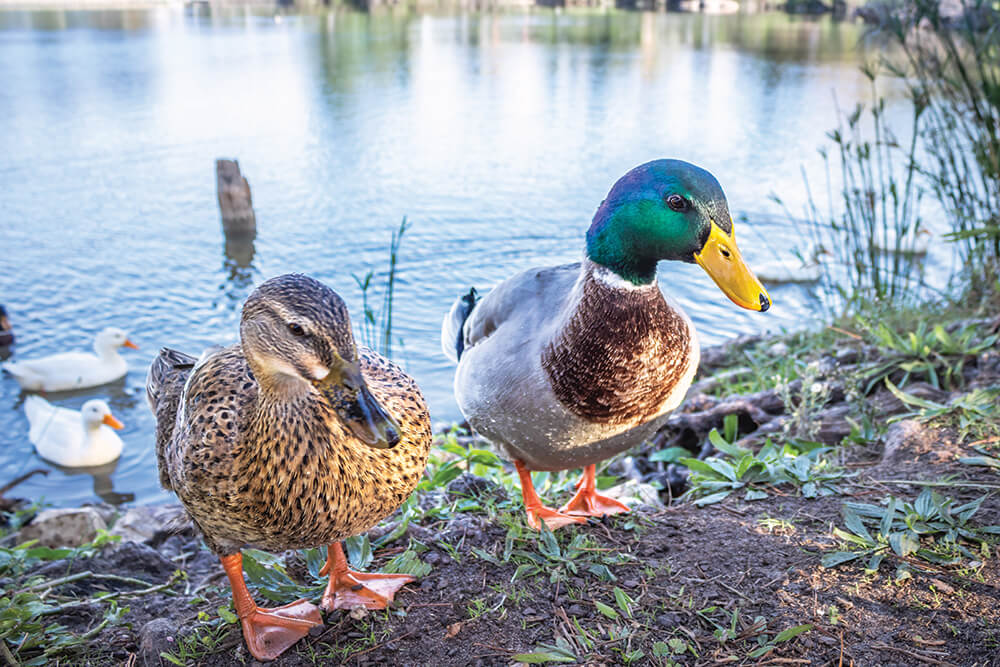
Ducks carry flu viruses, but rarely get sick. They’re natural reservoirs, hosts that remain healthy even as harmful pathogens shelter inside. (Image courtesy of 123RF)
The four first met as a group in January 2022. The more they talked, the more they realized their interests and expertise aligned—and how questions and approaches too ambitious for any single lab could be tackled, together. However, they had to move fast: proposals for the EPI grants were due just weeks later, in March.
They met the deadline, thanks to their own hard work and support from administration and staff, who fast-tracked budget information and other details. Illinois’ focus on collaborative work made the campus an ideal setting for such a project, van der Donk says. For instance, they were granted space to create a joint lab in the Carl R. Woese Institute for Genomic Biology, a facility designed to foster cross-disciplinary projects.
In May, they learned they were finalists for an award. At that point, the group had an opportunity to add collaborators or fine-tune their proposal. That’s when they realized they needed someone who could work with animal models, offering another way to explore and test interactions between viruses and antibodies. So, they looped in Guthmiller. Her experience with mouse models “was a beautiful piece to make the whole thing complete,” van der Donk says.
News of their approval came in July 2022, in an email to van der Donk, which he quickly forwarded. As the investigators read and processed it, they felt excitement and a bit of shock, given the size of the grant, how competitive it was and the speed of the process. “Elation and excitement were the strongest feelings. Then the immediate next reaction, at least for me, was, ‘Whoa, now we have to do it,’” van der Donk says, with a grin.
Although the funding didn’t officially begin until January 2023, the investigators leapt into action. Pandemic-related supply chain disruptions mean some lab equipment is backordered for months, and the team needed new tools, including centrifuges and protein purification systems. Students and staff had to be added or shifted, moves that can take months to complete.
And then there was the matter of the ducks themselves. COVID-19 had also disrupted access to animals and their tissues. Ideally, the researchers would source blood from birds in China—there, they’re more likely to be exposed to avian influenza, and therefore have more antibodies against the disease.
But China maintained strict border restrictions until March, meaning even a frequent collaborator of Wu’s in Hong Kong couldn’t reach any birds.
Yet for all the early logistical challenges, the project’s first few months have already been fruitful. Using single-cell sequencing—a next-generation technology that reveals the order of amino acids in each individual cell—the investigators already have developed a way to isolate antibodies from ducks. Such advanced techniques are expensive, so support of the grant is critical—and such fast progress, Wu says, is “quite remarkable.”
The collaboration also has set each of their labs on a new and different course. Mehta, for instance, can now add work with antibodies to his repertoire. Van der Donk’s lab had previously focused on cyclic peptides as a new class of antibiotics, but now, he sees broader applications for viruses, too. Although the grant lasts only three years, the results they produce during that time could enable each researcher, alone or in collaboration, to apply for new awards to continue moving these types of technologies forward.
The project may prove that, as Wu suspects, duck antibodies are somehow special and can be adapted to benefit humans. Or—as science sometimes does—it may take the investigators down unexpected paths.
But regardless, the knowledge will yield insights important to treating diseases in the future. “This strategy and these data are applicable to practically any virus-antibody interaction,” Stadtmueller says. “That’s the nice thing about this grant—success comes from just getting people together and working on these things.”
H5N1 Outbreak
Avian influenza has killed millions of domestic birds, resulting in higher costs for producers and consumers alike
The work that University of Illinois scientists are doing on bird flu comes none too soon. Currently, the world is experiencing one of the largest outbreaks of avian influenza in history. In fact, the disease has touched five continents and is now considered a panzootic, or a pandemic among animals.
The origins of the current outbreak date back to 1996, on a Chinese goose farm. There, a highly pathogenic virus known as H5N1 killed more than 40 percent of the birds it infected. And, it spread far beyond, mutating as it went.
The new, related virus causing the current outbreak spread through Asia, Africa, Europe and the Middle East in 2021, and was first found in North America late that year. Since then, it has killed more than 50 million chickens, turkeys and other poultry on farms in the U.S. alone, and millions more worldwide. Some have died of the virus itself, while others have been culled to contain it.
Consumers have seen the fallout at the grocery store, as egg prices soared to record highs in 2022 and early 2023—in some cases, setting shoppers back more than $5 per dozen.
Less obvious to the everyday individual, but no less devastating, has been the toll on wild birds. Though it’s harder to count them, some experts have estimated that millions of fowl such as terns, cormorants and endangered species like California condors have died.
The consequences include further depletion of threatened species, as well as the perpetuation of the disease. Wild birds—including ducks and geese, who might harbor the virus without getting as sick—can pass the flu back to livestock. There, in poultry farms with tightly packed animals, the microbes can evolve to become even more deadly.
Those adaptations may also increase the chances of bird flu spreading to mammals. Indeed, cases of the current strain have been found in harbor seals, skunks, bobcats and red foxes, among other species.
Fortunately, bird flu rarely spreads to humans. Those who do get sick usually have prolonged contact with infected birds. Only one U.S. case, in April 2022, was linked to the current outbreak—and that person was involved in culling a sick flock.
But as Nicholas Wu, biochemistry professor in the School of Molecular & Cellular Biology, told the team working on the Emerging Pathogens Initiative grant, cases that do spill over to humans may kill as many as half of those infected.
If the virus were to mutate and become easily transmissible from bird to human—and even worse, from human to human—a much more deadly pandemic would emerge. The team’s search for solutions isn’t merely academic; it could be world-saving. —C.K.
Meet the Team
The researchers discuss their motivation, expertise and project goals
Wilfred van der Donk
Richard E. Heckert Endowed Chair in Chemistry, Professor, Biochemistry and Carl R. Woese Institute for Genomic Biology, Howard Hughes Medical Institute Investigator
What inspires his work: In his native Netherlands, he was drawn to the concrete nature of chemistry; when he met his wife, a biologist, he migrated toward biochemistry.
Why U of I? “The chemistry department here is very strong historically, so it was a place where I could see myself being successful. They also offered my wife a position, and it’s been a great place to raise our children.”
What would success mean on this project? “There are different levels of success. Just answering the question, ‘Is there something special about ducks?’ would be a success. If it leads to a therapeutic outcome, of course, that would make it a major success.”
Nicholas Wu
Assistant Professor of Biochemistry
What inspires his work: His early experience with epidemics and the idea that such simple organisms could bring societies to a standstill. “It was just amazing how, even for things that are much simpler than humans, we don’t have enough understanding to develop effective countermeasures.”
Why U of I? “I like the collaborative culture, and they really treasure ideas from junior faculty.”
What would success mean on this project? “If our hypothesis is right, we should be able to find a lot of very potent and very broad antibodies from ducks that can target H1, H2, H3—different subtypes of hemagglutinin.”
Beth Stadtmueller
Assistant Professor of Biochemistry
What inspires her work: An interest in the detailed mechanisms of biology; during her Ph.D. studies at the University of Utah, she worked on a project where describing the structure of a protein explained why it wasn’t working in a patient who had a rare disease.
Why U of I? “Our graduate programs are really good; that’s a strength we have in terms of recruiting talented graduate students and supporting them. The institutional support for collaborative projects is definitely an advantage.”
What would success mean on this project? “To some extent, it’s already been a success in terms of us thinking about the evolution and structure of these antibodies. If we can link that to function, then use some of our engineering approaches to make those antibodies better, that will be really successful.”
Angad Mehta
T.M. Balthazor Faculty Scholar and Assistant Professor of Chemistry
What inspires his work: Growing up in a family of doctors, he dreamed of being a scientist, but hated biology—until he trained as a chemical engineer and realized he could apply those principles to molecules in biological systems
Why U of I? “I only applied to a few schools, and Illinois was one of the first places to make me an offer. There was enough open-mindedness to accept me as somebody who was not trying to do an existing thing, that I have a different approach.”
What would success mean on this project? “If our hypothesis is true—ducks really don’t get sick because there is something unique and special about their antibodies—and we can repurpose that for human influenza, it would be groundbreaking in many ways. But even if that’s not true, this is such an unexplored area of research—we may find new solutions to these problems.”
Jenna Guthmiller
Assistant Professor, Department of Immunology & Microbiology, University of Colorado Anschutz School of Medicine
What inspires her work: During her childhood on a dairy farm, watching cows get infections like mastitis—and marveling at the way vaccines protect animals and humans from pathogens. She planned to attend medical school but fell in love with the lab instead; she did undergraduate work on influenza, then returned to the disease during post-doctoral training at the University of Chicago before opening her own lab in Colorado in 2022.
What has collaborating with U of I scientists been like? “I came in person for the first time this summer. The campus was really nice, and everyone was very welcoming. There were tons of trainees who were engaged and impressive. As for the team, we all come in with our specific knowledge sets and are working together in a creative way to address these questions. It’s a great collaboration and a wonderful group.”
What would success mean on this project? “There’s almost nothing known about the duck immune system. Regardless of the results, we’ll be laying down foundational work to provide insight into why they’re such good hosts for influenza and serve as a kind of mixing vessel, if you will, for influenza viral evolution.”

